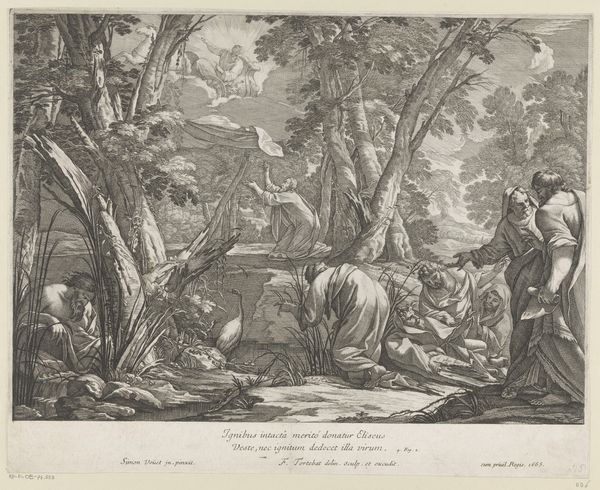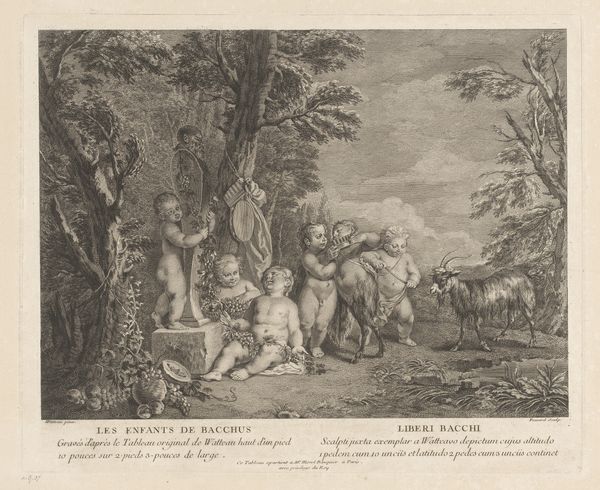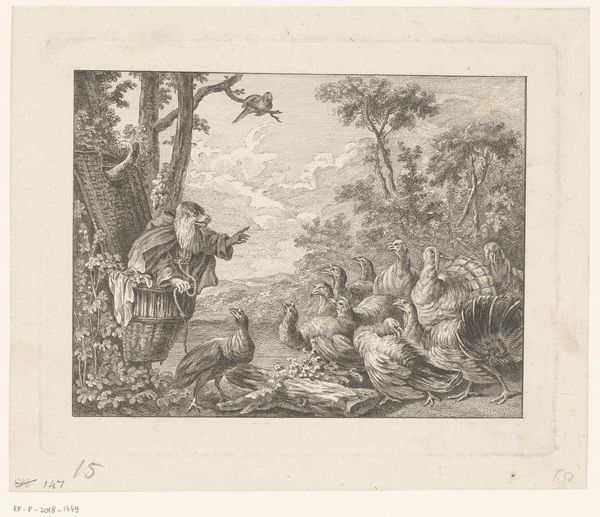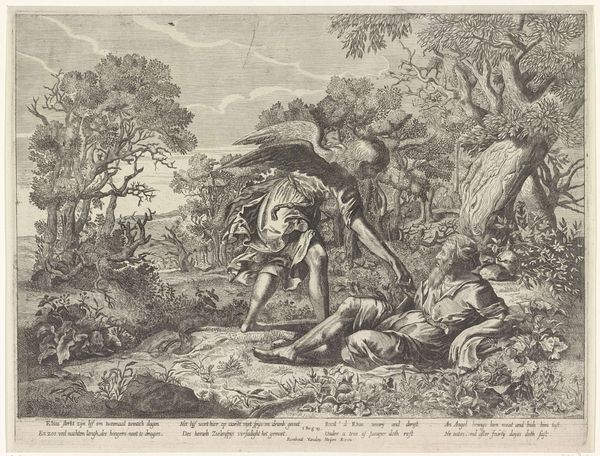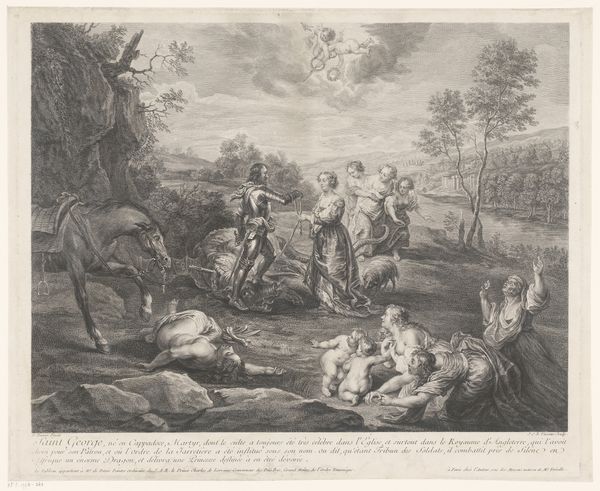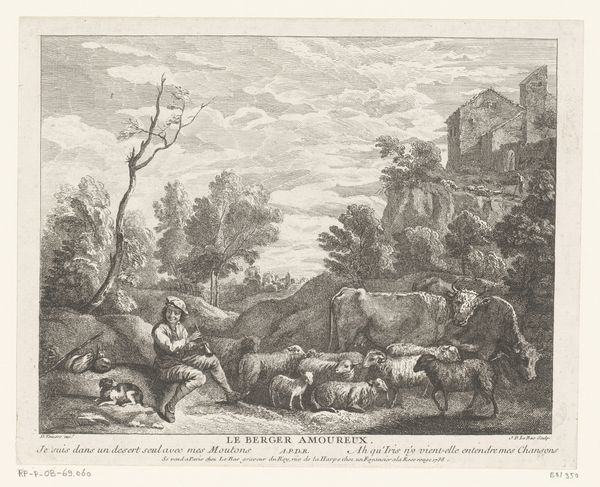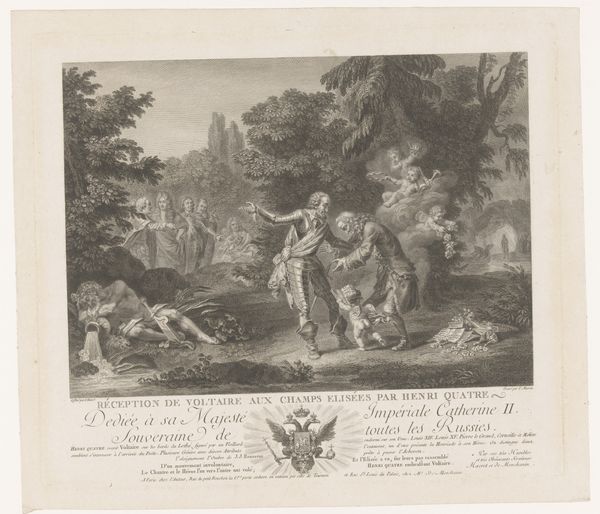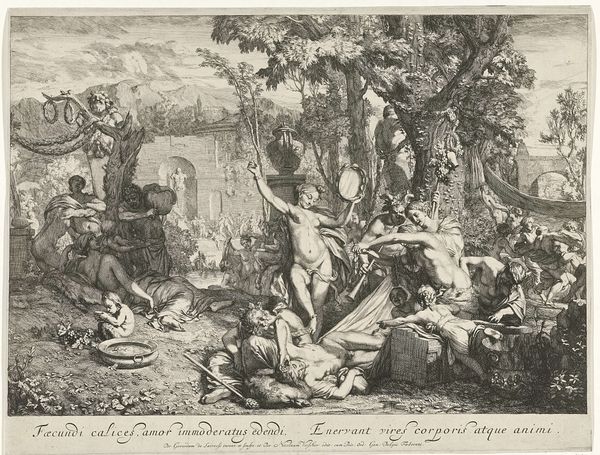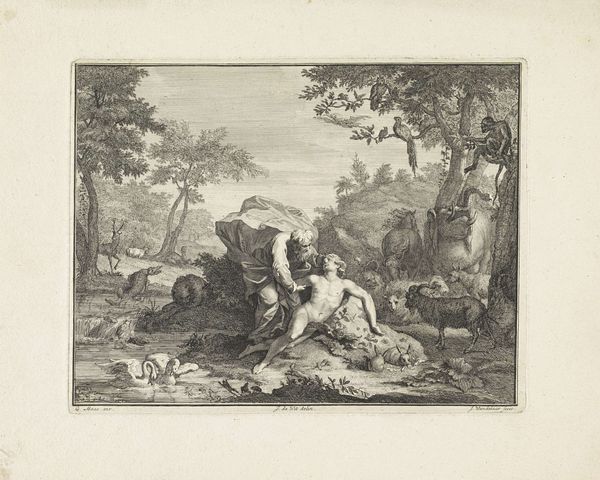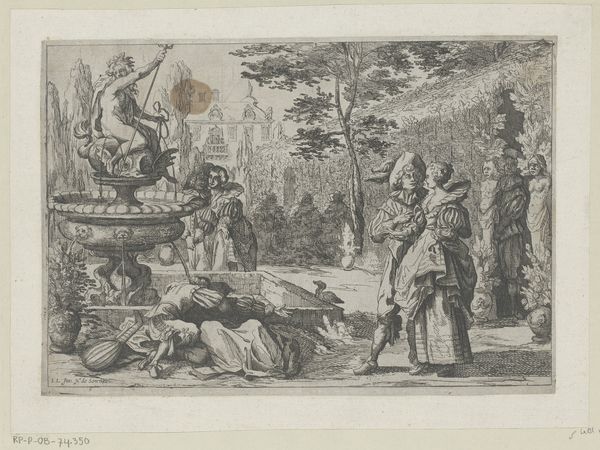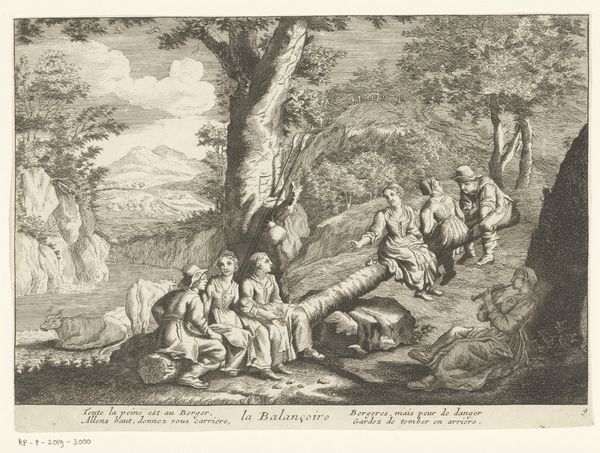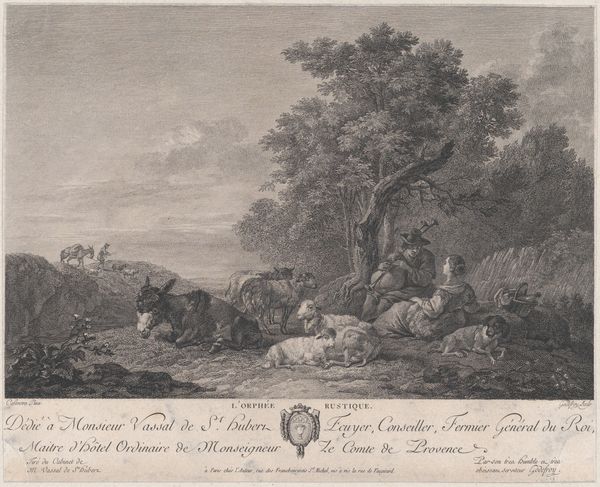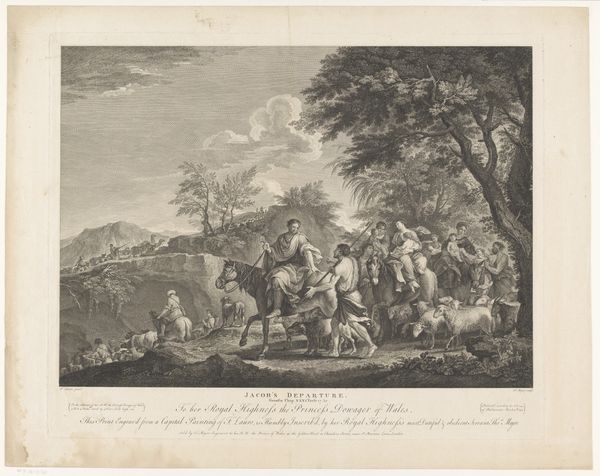
engraving
#
baroque
#
landscape
#
figuration
#
line
#
history-painting
#
engraving
Dimensions: height 328 mm, width 494 mm
Copyright: Rijks Museum: Open Domain
Editor: This is “Groep leeuwen en een leeuwenjacht,” or “Group of Lions and a Lion Hunt,” an engraving made between 1708 and 1767 by Johann Elias Ridinger and housed in the Rijksmuseum. It seems to depict two contrasting scenes – one of a tranquil pride of lions, the other a hunt in the distance. What do you see in this piece, especially considering the artist’s choices of material? Curator: I see a commentary on power, consumption, and the transformation of nature into art. Ridinger’s choice of engraving – a reproducible medium – suggests a wider circulation and perhaps democratization of this aristocratic pastime, hunting. Consider the labor involved in producing an engraving versus, say, an original oil painting. The print medium facilitates the commodification of the image. Editor: So the medium itself comments on the socio-economic conditions? The contrast between the hunt and the seemingly peaceful lions… is that deliberate, do you think? Curator: Absolutely. The hunt represents the forceful extraction of resources – the animal's life – and its transformation into a trophy, or in this case, art for consumption. The relaxed lions contrast to further highlight labor. One group exists only through the suffering of the other. Also note how Ridinger replicated a painting by Rubens. This emphasizes his artistic creation process that relies on the earlier work, and emphasizes artistic labour involved in the engraving. Editor: That makes the landscape aspect so much more charged – not just a pretty background, but a site of resource extraction and labor conflict. I hadn't thought about it that way before. Curator: Indeed. And that brings us back to the material conditions. The lines of the engraving, the paper it’s printed on – these are all products of specific industrial processes and reflect certain social hierarchies. It compels us to question, whose stories are amplified and consumed in these artistic materials and compositions? Editor: It really changes my perspective. Now I see the image itself as a product, shaped by labor, materials, and its role in the broader economy of its time. Thanks!
Comments
No comments
Be the first to comment and join the conversation on the ultimate creative platform.
